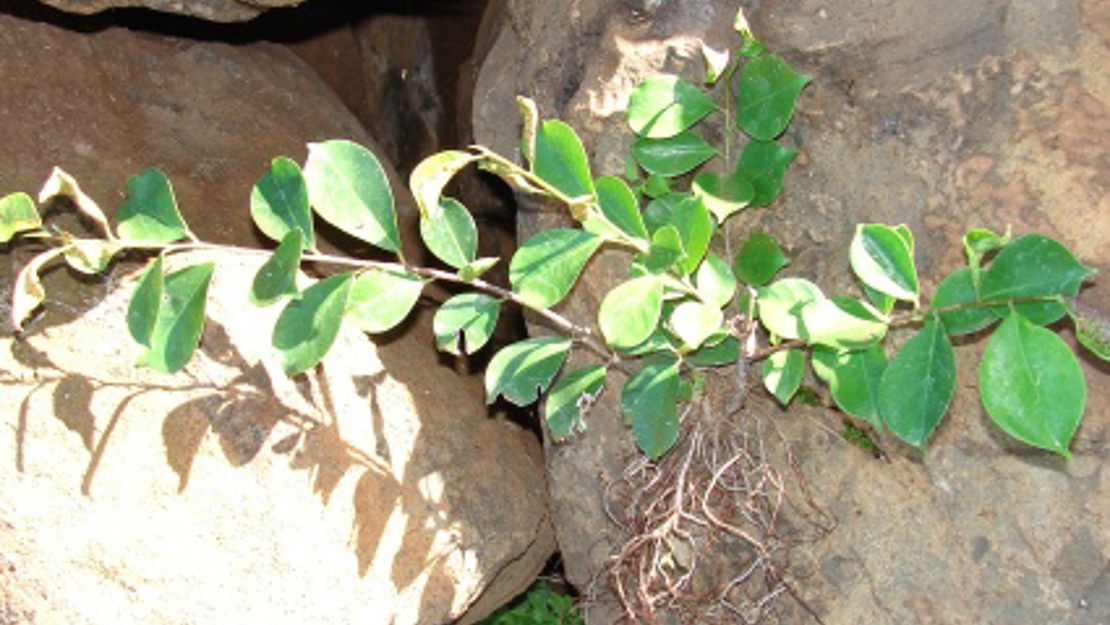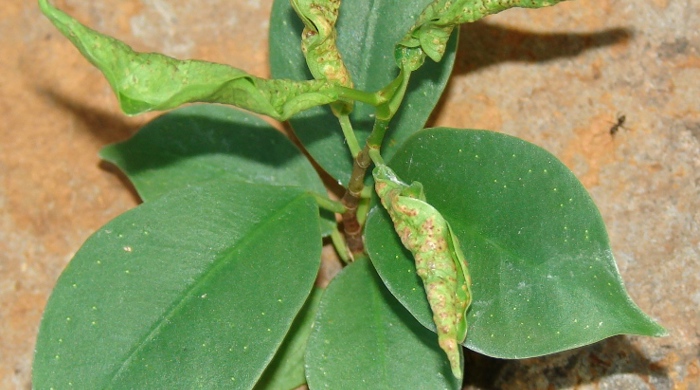Ficus microcarpa
Strangling fig
Family: Moraceae
Origin: Asia, Australia, New Caledonia

Regional Pest Management Plan (RPMP) status
- Whole region — Sustained control
- Hauraki Gulf Controlled Area Notice pest
General description
Large, spreading, evergreen tree that can be epiphytic when young. Aerial roots hang from the trunk and branches. Leaves are thick, leathery and elliptical. Flowers are tiny and borne in a fig-like, reddish enclosed inflorescence (syconium).
What you need to know
To help protect our environment:
- You must not breed, distribute, release or sell strangling fig within the Auckland region.
- You must not plant strangling fig within the Auckland region, unless you are transferring an existing plant on your land to another location within the boundaries of the same property.
- You must destroy any strangling fig on land that you occupy if it has been planted in breach of the above rules and you are directed to do so by an authorised person.
Habitats
Rocks, cliffs, hills, forest, floodplains, riparian areas, wetlands, mangroves, disturbed areas.
Dispersal
Seeds dispersed by birds and mammals.
Impact on environment
Likely to compete with, strangle and prevent seedling establishment of native plants. May pose risk to vegetation communities on volcanic cones such as Rangitoto. May provide food resource to introduced mammals and birds.
Control
Site Management
Follow up treated areas 3 times per year. Encourage natural regeneration of native plants or replant treated areas where possible after 2-3 treatments to establish dense ground cover and minimise reinvasion.
Recommended approaches
Physical control
Method: Dig or pull out.
Plant parts requiring disposal: Seeds and epiphytes in trees.
Disposal options: Remove to greenwaste or landfill if practical.
Biocontrol
Biocontrol is currently not available for this species.
Community agrichemical control recommendations
No qualifications: Cut stump and paste freshly cut base of stems with metsulfuron gel.
Basic Growsafe certified: Cut stump and spray freshly cut base with 2g metsulfuron-methyl per 1 L of water.
Certified Handler/Experienced agrichemical user: Drill and inject trees with 5g metsulfuron-methyl per 1L of water if safe to do so. Drill 18mm holes (tangentially angled downwards) in a spiral up the trunk. For 50mm stems drill one hole. For 100mm stems drill two holes. For larger stems drill holes 150mm apart.
Safety notes
Large trees must not be drilled that are closer than 1.5 times the height of the tree from paths, walkways and property.
Trees over 4 metres in height should be removed by a qualified arborist.
Caution: When using any herbicide or pesticide please read the label thoroughly to ensure that all instructions and safety requirements are followed.





